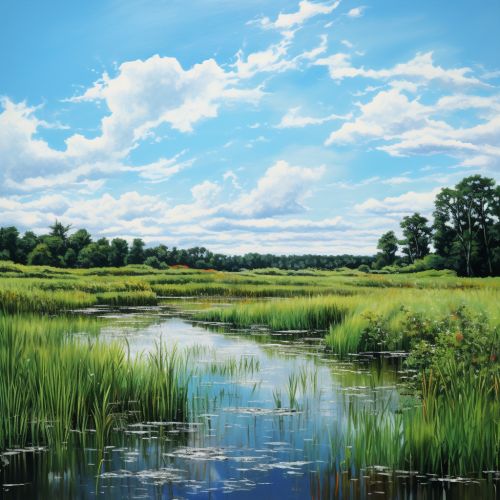Wetland conservation
Introduction
Wetland conservation is the practice of protecting and preserving areas of land that are saturated with water, either permanently or seasonally. These areas, known as wetlands, are home to a diverse range of plant and animal species and play a crucial role in the environment. Wetland conservation efforts aim to prevent the loss of wetlands, restore those that have been damaged, and improve the conditions of existing wetlands to promote biodiversity and improve ecological health.


Importance of Wetlands
Wetlands are among the most productive ecosystems in the world, comparable to rain forests and coral reefs. They provide a wide array of ecosystem services that benefit humanity and the planet as a whole. These services include water filtration, storm protection, flood control, and carbon sequestration. Wetlands also provide habitat for a multitude of species, many of which are rare or endangered.
Threats to Wetlands
Despite their importance, wetlands around the world are under threat. The primary threats include drainage for agriculture, urban development, pollution, and climate change. These threats lead to a loss of wetland area, a decrease in water quality, and a reduction in the abundance and diversity of wetland species.
Wetland Conservation Strategies
Conservation strategies for wetlands involve a combination of policy, management, and science. These strategies include the establishment of protected areas, restoration of degraded wetlands, sustainable management of wetland resources, and research to improve our understanding of wetlands and how to protect them.
Wetland Protection
Protected areas are a fundamental strategy in wetland conservation. These areas, which may be designated at the local, national, or international level, restrict human activities to prevent further degradation of wetlands. The Ramsar Convention on Wetlands is an international treaty that provides a framework for the conservation and wise use of wetlands.
Wetland Restoration
Restoration of degraded wetlands is another critical conservation strategy. This involves re-establishing the hydrology, vegetation, and natural processes of a wetland that has been damaged or destroyed. Restoration can be a complex and lengthy process, but it can significantly improve the ecological health and function of a wetland.
Sustainable Management
Sustainable management of wetland resources is a strategy that seeks to balance the use of wetlands with their conservation. This involves practices such as sustainable agriculture, water management, and land use planning. Sustainable management requires the involvement of local communities and stakeholders and is often guided by wetland management plans.
Wetland Research
Research is a vital component of wetland conservation. It improves our understanding of wetlands, informs conservation strategies, and monitors the success of conservation efforts. Wetland research can involve a range of disciplines, including ecology, hydrology, and social science.
Conclusion
Wetland conservation is a critical environmental issue. The loss and degradation of wetlands have significant implications for biodiversity, climate change, and human well-being. Through a combination of protection, restoration, sustainable management, and research, we can conserve these vital ecosystems for future generations.
